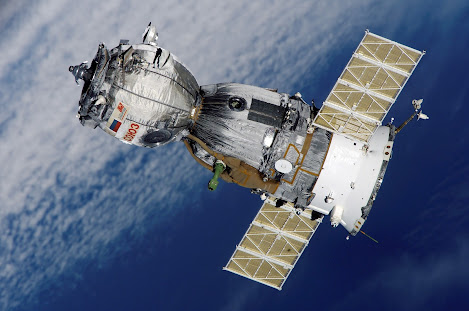Facts about space exploration
SPACE EXPLORATION
Space exploration is an incredibly fascinating subject that captures the imagination of people around the world. Over the years, humans have made significant progress in understanding the universe beyond our planet. From landing on the moon to sending rovers to Mars, space exploration has been a key area of scientific research and discovery. In this article, we'll explore some interesting facts about space exploration, from historic firsts to ongoing missions and future goals. Whether you're a space enthusiast or just curious about space, these facts are sure to interest and inform you. Let's dive in!
FIRSTS IN SPACE EXPLORATION
Yuri Gagarin, a Soviet cosmonaut, became the first human to travel into space on April 12, 1961. He once circled the Earth in the Vostok 1 spacecraft.
FIRST MAN ON THE MOON:
Neil Armstrong and Edwin "Buzz" Aldrin, both NASA astronauts, became the first humans to walk on the moon during the Apollo 11 mission on July 20, 1969.
FIRST SPACECRAFT TO LAND ON THE MOON:
The Soviet probe Luna 2 was the first man-made object to land on the moon on September 14, 1959.
FIRST SPACE STATION:
The Soviet Union launched the first space station, Salyut 1, on April 19, 1971. It orbited the Earth for 175 days and was manned by two crews of cosmonauts.
THE FIRST REUSABLE SPACECRAFT:
NASA's Space Shuttle, which flew from 1981 to 2011, was the first spacecraft designed to be reusable. It could take crews and cargo into orbit and then return to Earth and land like an airplane.
THE INTERNATIONAL SPACE STATION

The International Space Station (ISS) is a joint project of five space agencies: NASA (United States), Roskosmos (Russia), JAXA (Japan), ESA (Europe), and CSA (Canada). The ISS is a research facility that orbits the Earth at an altitude of approximately 400 kilometers (250 miles).
SIZE AND STRUCTURE:
The ISS is about the size of a football field, weighing approximately 419,725 kg
(925,335 lb). It consists of pressure modules that are connected by a series of trusses and solar arrays.
MISSIONS AND EXPERIMENTS:
The ISS is used for a variety of scientific investigations, including studies of human physiology, biology, physics, astronomy, and Earth science. Astronauts conduct experiments and collect data while living and working aboard the station.
CREW AND OPERATIONS:
The ISS has a crew of up to six people at a time who live and work on the station for six-month rotations. The crew includes astronauts from different countries who work together on station maintenance and scientific research. The station is operated jointly by the five participating space agencies.
TECHNOLOGY AND EQUIPMENT:
The ISS has advanced technology and equipment, including robotics, communication systems, life support systems, and scientific instruments. It also has an air chamber that allows astronauts to perform spacewalks for maintenance and repairs.
FUTURE PLANS:
The ISS is expected to operate until at least 2024, with the possibility of an extension until 2028. NASA plans to use the ISS as a test bed for future space technologies and as a springboard for future missions to the Moon and Mars.
MARS EXPLORATION
FIRST MARS FLYBY:
The first spacecraft to fly by Mars was NASA's Mariner 4 in 1965. It sent back the first detailed images of Mars, revealing craters and a heavily cratered surface.
FIRST SUCCESSFUL LANDING ON MARS:
NASA's Viking 1 spacecraft made the first successful landing on Mars on July 20, 1976. It operated on the surface for nearly seven years, studying the Martian environment and sending back images and data.
CURRENT MISSIONS:
There are currently several active missions exploring Mars, including NASA's Perseverance rover and China's Tianwen-1 spacecraft, both of which landed on Mars in February 2021. There is also the UAE's Hope spacecraft in orbit around Mars, studying the planet's atmosphere.
FUTURE MISSIONS:
NASA plans to launch the Mars Sample Return mission in 2026 to collect and return samples of Martian soil and rock to Earth for analysis. SpaceX CEO Elon Musk also stated his goal of sending humans to Mars soon.
CHALLENGES OF MARS EXPLORATION:
Mars exploration presents several challenges, including the harsh environment, radiation exposure, and the difficulty of sending large payloads such a long distance. However, advances in technology and research continue to push the boundaries of what is possible in Mars exploration.
COMMERCIAL SPACE EXPLORATION

Commercial space exploration refers to the exploration and use of space by private companies for commercial purposes, as opposed to government-funded space programs. The primary goal of commercial space exploration is to develop and operate a sustainable and profitable space industry that can provide economic and technological benefits.
Some of the benefits of commercial space exploration include:
ECONOMIC OPPORTUNITIES:
Commercial space exploration creates new markets and industries, leading to job creation and economic growth. The space industry can generate revenue from satellite launches, space tourism, and asteroid resource extraction.
TECHNOLOGICAL ADVANCES:
The development of new technologies for commercial space exploration may have applications in other industries such as healthcare, transportation, and energy. For example, the development of reusable rockets and spacecraft can reduce the cost of space exploration and make it more affordable.
SCIENTIFIC RESEARCH:
Commercial space exploration can also contribute to scientific research in areas such as materials science, life sciences, and astronomy.






Comments
Post a Comment